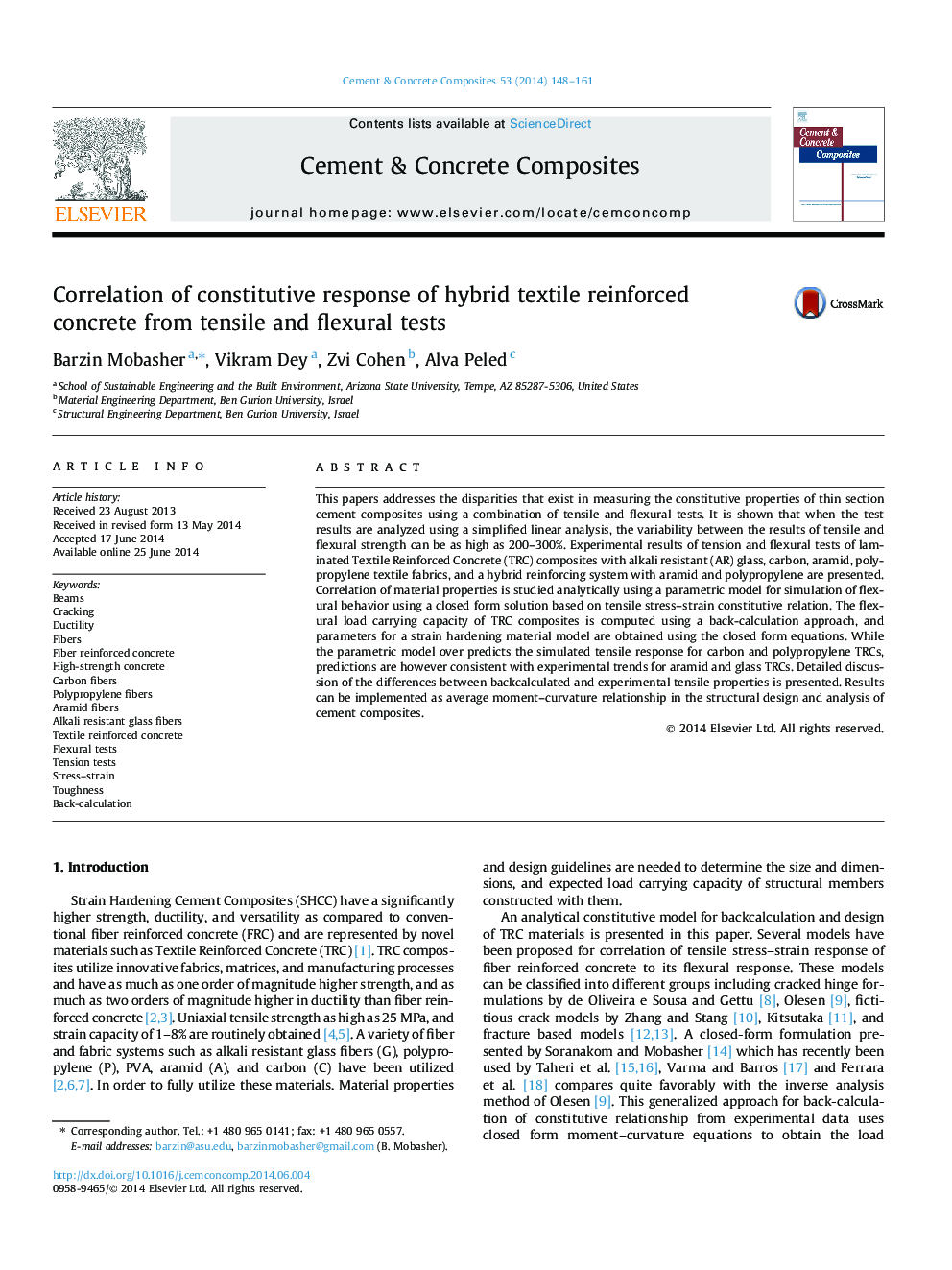| Article ID | Journal | Published Year | Pages | File Type |
|---|---|---|---|---|
| 1454552 | Cement and Concrete Composites | 2014 | 14 Pages |
This papers addresses the disparities that exist in measuring the constitutive properties of thin section cement composites using a combination of tensile and flexural tests. It is shown that when the test results are analyzed using a simplified linear analysis, the variability between the results of tensile and flexural strength can be as high as 200–300%. Experimental results of tension and flexural tests of laminated Textile Reinforced Concrete (TRC) composites with alkali resistant (AR) glass, carbon, aramid, polypropylene textile fabrics, and a hybrid reinforcing system with aramid and polypropylene are presented. Correlation of material properties is studied analytically using a parametric model for simulation of flexural behavior using a closed form solution based on tensile stress–strain constitutive relation. The flexural load carrying capacity of TRC composites is computed using a back-calculation approach, and parameters for a strain hardening material model are obtained using the closed form equations. While the parametric model over predicts the simulated tensile response for carbon and polypropylene TRCs, predictions are however consistent with experimental trends for aramid and glass TRCs. Detailed discussion of the differences between backcalculated and experimental tensile properties is presented. Results can be implemented as average moment–curvature relationship in the structural design and analysis of cement composites.
